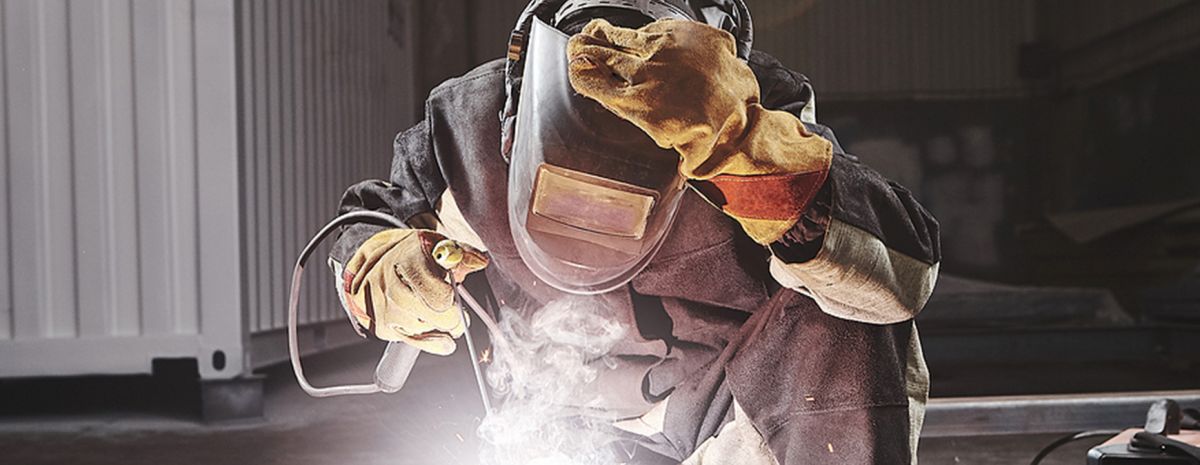TWS is a Great Training Option for Everyone
Learn more about how we can prepare you to advance your career.
Mistakes are inevitable when welding, especially when working on complex projects. Even the most experienced and skilled trades professionals make errors that result in failing joints. Becoming a better welder isn’t about eliminating these mistakes altogether. Instead, it’s about familiarizing yourself with the causes of these joint failures. When you know what problems to keep an eye out for, you can more accurately identify the root cause of the issue to make necessary changes.
What are the possible failures in welded joints?
1. Slag Inclusion
Slag inclusion is a common welding mistake where welding debris – known as slag – gets stuck within the weld.1 A high-quality weld is characterized by its consistent structure and uniform appearance.1 The inclusion of slag undermines the solidity of a welding joint, making it more susceptible to failure. A weld with slag inclusion might feel sturdy at first, but these small deposits of debris can slowly deteriorate the integrity of the joint over time.1 Slag inclusion errors are most common with Flux Cored Arc Welding, Stick Welding, and other flux-based welding techniques.1 It’s impossible to avoid this issue entirely, but you can see most inclusions during a quick inspection of the weld.1
2. Corrosion
Weld joints don’t only fail due to mistakes made during the joining process. There are several factors that can impact the integrity of a joint well after the actual welding occurs. If you’ve ever noticed an old bicycle rusting, you’ve witnessed a type of corrosion ruining a joint weld.2 The physical and chemical modifications resulting from the welding process actually reduce the corrosion resistance of metals. That’s why corrosion tends to occur at joints before other areas on the base metal.2 Although corrosion doesn’t impact a weld joint right away, it is possible to reduce the impact of this natural process. Choosing the right welding techniques, base metals, and filler metals for the specific job can give welding joints a longer lifespan.2
3. Improper Heating
Heat is a crucial component of the welding process that can impact the strength of a joint when not applied properly. Welders have to pre-heat and post-heat metals according to the demands of the material to achieve a proper connection. Both overheating and underheating a weld joint can make it more prone to failure. in the future.3 Fortunately, joints tend to show symptoms of poor heating techniques shortly after weld completion. If you notice cracks near the joint or strong discoloration on just one side of the joint, you might have a heating problem.3
Have You Considered a Career in the Skilled Trades?
Fill out the form to recieve a no obligation info packet.
4. Oxidation
Oxidation is a compound comprised of oxygen and another element. When it comes to welding, this other compound typically comes in the form of a metal such as iron oxide or aluminum oxide. These compounds can decrease the strength of a weld joint over time as they become wedged in between the base and filler metals.4 Welders can reduce the potential of oxidation when combining metals through a process known as weld purging. This strategy sees the removal of gases such as oxygen throughout the welding process.5 You can identify oxidation in the form of bubble pockets in a weld. Even the smallest voids can fill up with moisture and gas, resulting in a weaker weld joint.6
5. Distortion
The condition of base metals impacts the success of a weld just as much as the welding quality. Any imperfections in the metals being joined together can result in joint failure. For instance, parts that were exposed to high heat might have distortions that make it harder for welders to achieve proper alignment. On the bright side, these issues are easily identifiable even before striking the arc. That’s why it’s crucial for welders to inspect the base metals before starting a welding joint project.6
6. Faulty Equipment
Every piece of welding equipment plays a crucial role in the quality of a weld joint. When one or more of these components fails, the integrity of the weld is compromised. Faulty equipment can come in the form of low-quality equipment that never worked well and even high-quality equipment that wasn’t properly maintained. Regardless of the reason, it’s important for welders to inspect their tools before starting a weld. This prevents poor weld joints and eliminates the troubleshooting that inevitably comes after a low-quality weld.7
Looking for the right place to further your career in the welding field? Find out why Texas is the capital of welding jobs in the US.
This blog has been labeled as archived as it may no longer contain the most up-to-date data. For a list of all current blog posts, please visit our blog homepage at https://www.tws.edu/blog/







